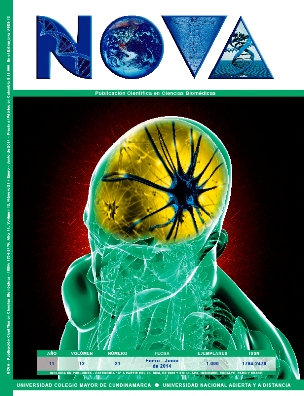NOVA por http://www.unicolmayor.edu.co/publicaciones/index.php/nova se distribuye bajo una licencia Reconocimiento No Comercial- Compartir igual
Así mismo, los autores mantienen sus derechos de propiedad intelectual sobre los artículos,
Declaración de privacidad.
Los nombres y las direcciones de correo electrónico introducidos en esta revista se usarán exclusivamente para los fines establecidos en ella y no se proporcionarán a terceros o para su uso con otros fines.
Relapse in leprosy and type II reaction in a patient treated with multidrug therapy (MDT)
Leprosy is a chronic infectious disease endemic to African, Asian, Latin America and South Pacific countries. It is caused by Mycobacterium leprae that manifests itself as varied as areas of hypo or anesthesia, macules hypochromic, with or without neura thickening. On some occasions, after having completed the course of therapy recommended by the World Health Organization, it can recur, showing new clinical lesions or increasing the bacillary index. These features can be confused with erythema nodosum leprosum, characterized by an antigen-antibody reaction that secures a complement through which the immune system combats antigen cells. This text describes a case of recurrence of lepromatous leprosy and lesions compatible with erythema nodosum leprosum after it has been treated with combination chemotherapy.









